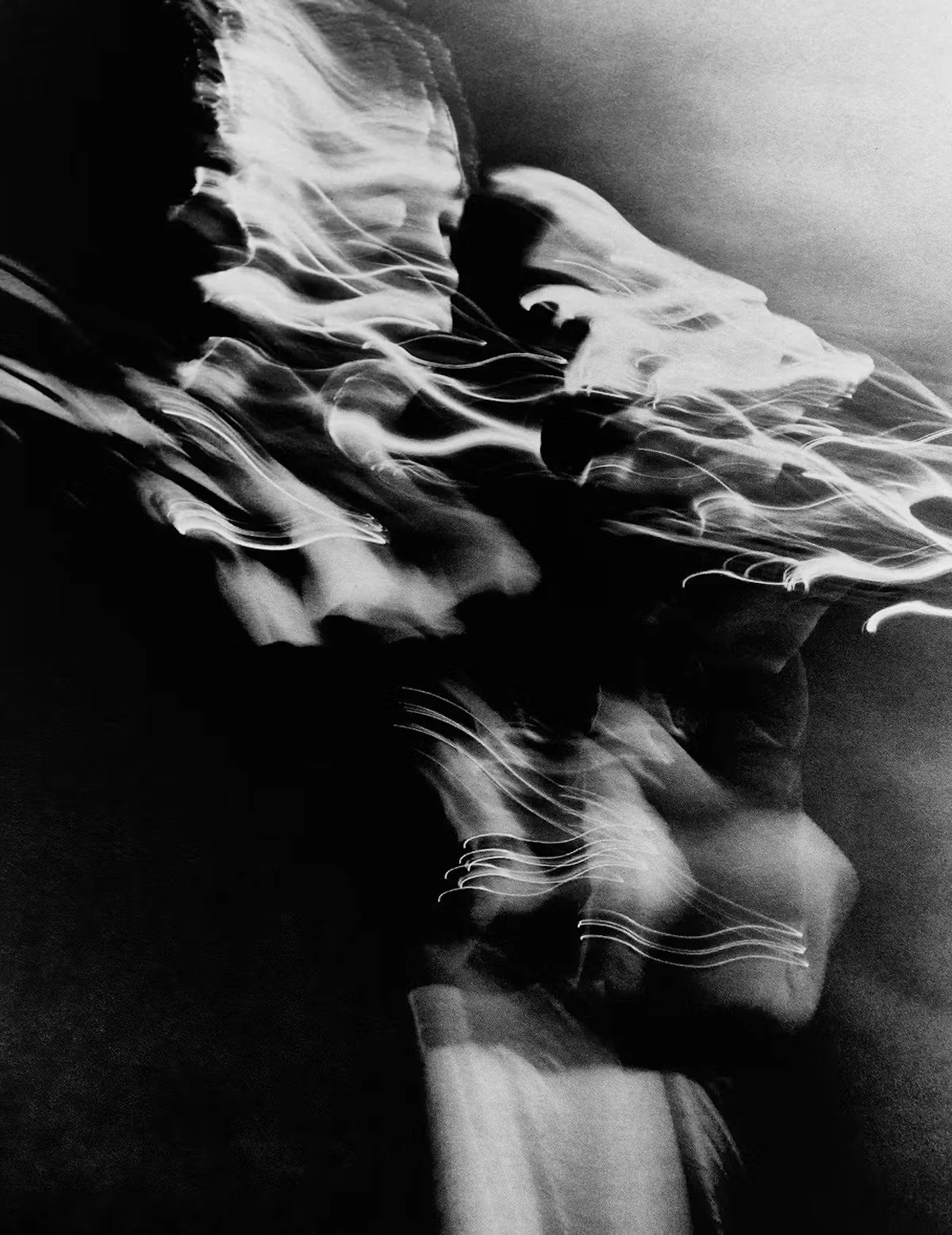Looking Into the Blur
Jack Davison, Flamenca, 2023, published in Sixteen Magazine
Defined by what it is not, the flou describes the indistinguishable against the distinguishable. Fuzzy, hazy, smudgy, whose contours are unclear. Flou is what we see without looking.
Flou often triggers an anxious and impatient reaction, particularly among those reliant on corrective eyewear, constantly updating prescriptions to rectify their far-from-20/20 vision. Waiting for an image to load only to find it blurry mirrors a frustration felt in many situations. In my native language several idioms encapsulate that apprehensive feeling: “etre ou rester dans le flou”, “un flou juridique”, “une idée floue”.
However, the richest part of the visible sphere might very well lie behind the blur. This deliberate haziness, echoing a state of inebriation, subtly encourages us to let go and oppose rigidity.
Flou is French for all that is hazy, floaty, and vaporific. I'll use the word blur as an English equivalent while keeping in mind the attached and broader sense of vagueness. Forming in motion, devoid of compactness, colours drowning into each other, the blur is an ephemeral, fleeting image.
Jack Davison, Jazz Issue, 2021, published in Sixteen Magazine
Within Western culture, the concept of flou challenges the traditional 'clear image' that relates to operational actions, inducing a perceptual shift. Art is often involved with the indistinct and the inexplicable allure that goes beyond precise definition, as evident in our appreciation for things we cannot fully articulate.
Embracing the flou could be seen as a departure from completion, minimising work on colour and form and thereby seemingly impoverishing the creation. However, this uncertainty can become a medium of truth, evoking a misty and elusive viewpoint that remains expressive and revelatory.
In photography, the link with the blur is a natural one. In fact, photography is an opportunity for the neatest outcome, sharper and more precise than the human hand could ever attain. Blurry shots can go beyond the mere capture of a subject; instead, they convey the essence, the intangible aspects beyond the sheer pictorial representation. Shades of flou show movement, one that hides the passing of a time-lapse, depicting the noise and atmosphere surrounding the subject.
The notion of flou is, however, a conflicting one, notably distinguishing ‘blurry’ from ‘out-of-focus.’ In a medium where precision and clear definition are usually paramount, the flou emerges either as a choice or as an accident, the latter comparable to a beginner’s mistake like obstructing the lens of a disposable camera.
The first departure from definition is visible in the act of painting and is marked by the sfumato technique. In its very meaning, it acts as a smoke screen, giving a vaporific effect to backgrounds.
Turner and the ensuing Impressionists, or later Rothko and Richter, have all delved into the blur to evoke a sense of grace and lightness in brushstrokes; something visibly mellow and tender, allowing smoother transitions between colours and shapes and avoiding the abrupt.
Jack Davison, Jazz Issue, 2021, published in Sixteen Magazine



